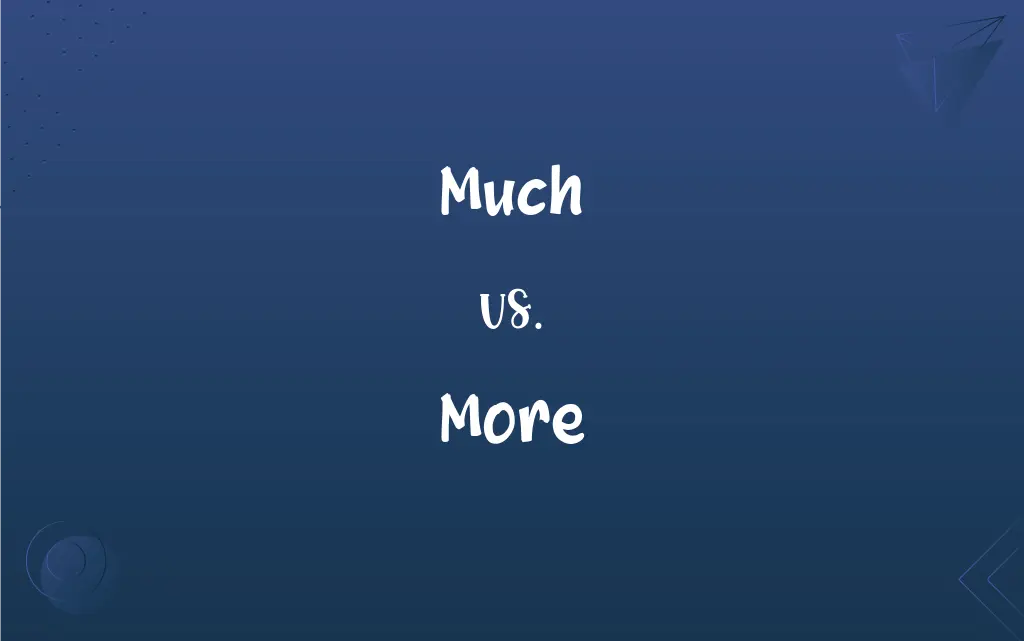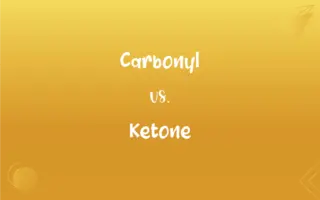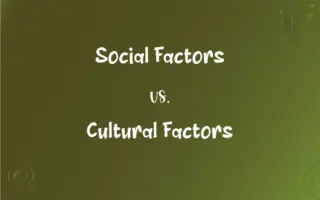Much vs. More: What's the Difference?
Edited by Aimie Carlson || By Janet White || Published on January 3, 2024
Much is used to describe a large amount of something. More: Comparative term used to indicate a greater quantity or degree than is currently being considered.

Key Differences
"Much" is used to quantify a large amount or degree of something, often in questions and negative statements, as in, "Is there much water left?" In contrast, "more" is the comparative form of 'much' and 'many', indicating an increased amount or degree, used in sentences like, "I need more water."
"Much" is often used with uncountable nouns to denote a large quantity, for instance, "There isn't much time." Conversely, "more" implies an addition to the existing quantity or degree and can be used with both countable and uncountable nouns, as in, "We have more time now."
In usage, "much" tends to emphasize the size or extent of a single entity or concept, like "Much thought has been given to this decision." On the other hand, "more" is used to compare between entities or quantities, as in, "This decision requires more thought than the last."
"Much" can also imply a sense of something being excessive or more than necessary, such as in "There's too much noise." Meanwhile, "more" is relative and refers to an increase in quantity or degree in comparison to another, like in "There's more noise today than yesterday."
"Much" is commonly used in interrogative and negative constructions to ask about or negate a large quantity, as in, "Is there much evidence?" In contrast, "more" is used to indicate a progression or an increase, typically in positive or comparative statements, like, "We found more evidence."
ADVERTISEMENT
Comparison Chart
Usage
Quantifying a large amount, often in questions/negatives
Indicating a greater quantity in comparison
Type of Nouns
Usually with uncountable nouns
Used with both countable and uncountable nouns
Context
Emphasizes size/extent of a single entity/concept
Used to compare between entities or quantities
Implication
Can imply excessiveness
Indicates an increase or progression
Construction
Common in interrogative and negative statements
Used in positive or comparative statements
ADVERTISEMENT
Much and More Definitions
Much
Much refers to a large amount of something uncountable.
There wasn't much water left in the desert.
More
Indicates a progression or increase.
As he practiced, he became more skilled.
Much
Often used in questions or negatives for emphasis.
Does he have much experience in this field?
More
Used to compare and indicate a greater degree.
This task requires more effort than the last.
Much
Can indicate an excessive amount.
There’s too much salt in this soup.
More
Often used in positive statements to show preference.
I would like more coffee, please.
Much
Used to express a high degree of something.
Much care is needed in handling these artifacts.
More
Can be used with both countable and uncountable nouns.
We need more chairs for the guests.
Much
Implies a substantial or significant amount.
There’s much to consider before making a decision.
More
More refers to an additional amount or quantity.
She wanted more time to complete the project.
Much
Great in quantity, degree, or extent
Not much rain.
Much affection.
More
Greater in number
A hall with more seats.
Much
A large quantity or amount
Much has been written.
More
Greater in size, amount, extent, or degree
More land.
More support.
FAQs
When do you use 'much'?
In questions and negatives to refer to a large amount, especially with uncountable nouns.
What does 'more' indicate?
A greater amount or degree compared to another quantity.
Is 'more' used in comparisons?
Yes, it's commonly used to compare quantities or degrees.
Can 'more' be used with both singular and plural nouns?
Yes, with both countable and uncountable nouns.
How does 'more' function in a sentence?
As a comparative term to indicate an increase.
How is 'much' used in questions?
To inquire about the extent or amount, like "How much time?"
Can 'much' be used with countable nouns?
Typically, it's used with uncountable nouns.
Can 'much' be used to emphasize?
Yes, it's often used for emphasis in negative statements.
Do 'much' and 'more' have different grammatical forms?
Yes, 'much' is an adjective or adverb, while 'more' is a comparative adjective or adverb.
Can 'more' be used to express preference?
Yes, often in positive statements to show preference.
Is 'much' used in formal writing?
Yes, especially in formal inquiries and negations.
Does 'more' always indicate a direct comparison?
Often, but it can also simply suggest an addition.
Is 'much' used in casual conversation?
Yes, though less frequently than 'more'.
Can 'more' be used without a reference point?
It can, implying a general increase or preference.
Is 'much' used in positive statements?
Rarely, it's more common in questions and negative contexts.
Can 'much' imply excessiveness?
Yes, as in "too much" indicating more than needed.
Can 'much' stand alone in a sentence?
It usually accompanies a noun or verb, unlike 'more' which can stand alone.
How does 'more' relate to quantity and quality?
It can refer to both an increase in quantity and an improvement in quality.
What is the difference in use between 'much' and 'more'?
'Much' quantifies a large amount, while 'more' indicates an addition or comparison.
Is 'more' a comparative or superlative?
It's the comparative form of 'much' and 'many'.
About Author
Written by
Janet WhiteJanet White has been an esteemed writer and blogger for Difference Wiki. Holding a Master's degree in Science and Medical Journalism from the prestigious Boston University, she has consistently demonstrated her expertise and passion for her field. When she's not immersed in her work, Janet relishes her time exercising, delving into a good book, and cherishing moments with friends and family.
Edited by
Aimie CarlsonAimie Carlson, holding a master's degree in English literature, is a fervent English language enthusiast. She lends her writing talents to Difference Wiki, a prominent website that specializes in comparisons, offering readers insightful analyses that both captivate and inform.






































































